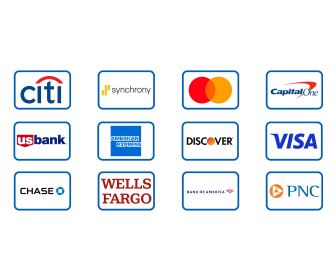The Ultimate Comparison: Fixed Annual Fee vs. No Fee Credit Cards
When choosing a credit card, one of the biggest questions is simple: should you pay an annual fee or avoid it altogether? Annual fee cards often promise premium perks, while no-fee cards keep things simple and accessible. But which one actually delivers better value — especially in 2025’s high-rate, high-reward environment? Let’s compare the two side by side and see when paying an annual fee makes sense — and when it doesn’t.
1. What You Get With a Fixed Annual Fee Card
Cards with annual fees typically offer higher reward rates, travel benefits, and exclusive features like insurance and lounge access. You’re essentially buying a “bundle” of perks that can more than offset the cost if you use them strategically. Here are some examples:
- American Express® Gold Card — $250 annual fee, but 4x points on dining and groceries, plus up to $240 in dining and Uber credits.
- Chase Sapphire Preferred® — $95 annual fee, with 5x on travel through Chase, 3x on dining, and premium trip insurance.
- Capital One Venture Rewards® — $95 annual fee, but 2x miles on all purchases and up to $100 Global Entry credit.
If you travel frequently or spend heavily in bonus categories, these cards can easily pay for themselves — and even generate a profit through rewards.
2. What You Get With a No Annual Fee Card
No-fee cards are perfect for those who want simplicity, predictable savings, and flexibility. You won’t get lounge access or premium insurance, but you’ll still earn respectable cash back without worrying about breaking even. Examples include:
- Capital One Quicksilver® — 1.5% unlimited cash back on every purchase, with no fees and no foreign transaction charges.
- Citi Custom Cash℠ — 5% cash back on your top spending category (like dining or groceries) each month, automatically applied.
- Chase Freedom Unlimited® — 1.5% on everything, plus 3% on dining and drugstores.
For many people, especially those who don’t travel much, no-fee cards offer the best of both worlds — simplicity and steady rewards.
3. The Math Behind Annual Fees
Before committing to a fee, do the math. A $95 annual fee means you need to earn at least $95 in extra rewards or perks just to break even. For instance, if your card gives 2% more back on purchases than your no-fee alternative, you’d need to spend about $4,750 a year to make up the difference. If you spend less, you’re probably better off with a no-fee card.
Example: If your annual fee card earns 4% on dining instead of 2%, and you spend $3,000 per year on dining, that extra 2% earns $60 — not enough to offset a $95 fee. In that case, a no-fee card wins.
4. When Annual Fee Cards Are Worth It
- You travel multiple times a year and can use lounge access, insurance, or airline credits.
- You spend heavily in bonus categories like dining, travel, or groceries.
- You redeem points strategically through airline or hotel partners — not just for cash back.
If you fit at least two of the above, an annual fee card likely pays off. Otherwise, go fee-free and keep your rewards simple.
5. The Hybrid Strategy
Many savvy cardholders combine both types. Use one premium card for bonus categories and perks, and a no-fee card for everyday purchases. This way, you maximize rewards without letting annual fees stack up. A popular combo is the Chase Sapphire Preferred® for travel and dining paired with Chase Freedom Unlimited® for general spending.
Final Thoughts
There’s no one-size-fits-all answer. Annual fee cards can be amazing if you use their perks — but if you’re chasing simplicity or paying interest, they’re not worth it. The best strategy? Choose based on your lifestyle, run the numbers, and remember: a “free” card isn’t truly free if you leave rewards on the table, and a fee card isn’t expensive if it pays for itself.
Not financial advice. Credit card features, annual fees, and reward rates can change. Always verify the latest terms on the issuer’s official website before applying.
Continue reading: Why Your Credit Card APR Is So High — And What You Can Negotiate · Best Cards for Bad Credit: Can You Still Get Approved?



